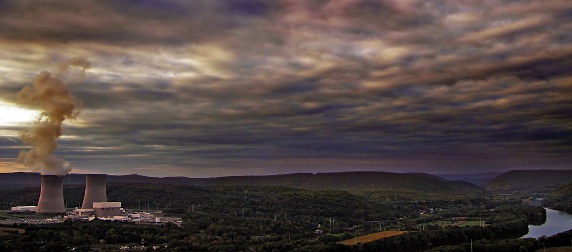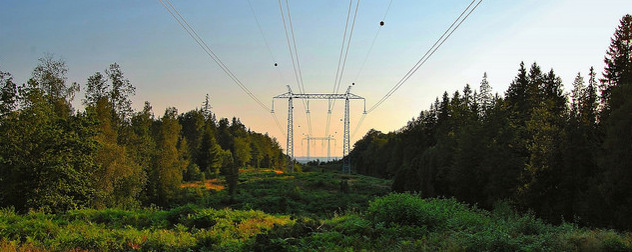In 1954, Lewis Strauss, then the chairman of the federal Atomic Energy Commission, famously predicted that electricity from nuclear power plants would become “too cheap to meter.” As it turns out, it may be too expensive to make.
In fairness to Strauss, he was talking about power from hydrogen fusion, not uranium fission. Nearly 60 years later, hydrogen fusion still has no commercial application. On the other hand, the uranium fission plants that were on the drawing boards in Strauss’ day, which have since come to fruition, may soon be obsolete.
The New York Times recently reported that competition, mainly from cheap natural gas, has forced old nuclear plants to close and has prevented new ones from gaining traction. A plant in Wisconsin closed earlier this year, and a Vermont plant is slated to close in 2014.
Plants are closing for the simple reason that they cannot continue to stand against the combination of conservation concerns, flexible energy demand by large industrial customers, and competition from turbines fired by newly cheap and abundant natural gas.
James J. Hoecker, a former chairman of the Federal Energy Regulatory Commission, told The Times that nuclear plants are struggling because natural gas plants can be built more quickly and for less money, and offer flexible output in response to demand, while nuclear plants cannot vary their hourly production. “This is what’s happening in the real world,” Hoecker said. “It’s not something that the Federal Energy Regulatory Commission has made any conscious decision to affect.”
The only reason most nuclear plants were ever economically viable in the first place was a welter of government subsidies and costs that were hidden rather than recognized. Nuclear power producers could never have gotten private insurance to cover the potential costs of a major accident. They did not have to get private insurance, however, because the government capped liability for any nuclear power accident at less than $12 billion, and spread that risk across the entire nuclear power industry. By doing so, the government unyoked financial concerns from safety concerns. Though the Price-Anderson Act, the law that imposed this risk-limiting and risk-spreading structure, was originally intended to get a nascent industry off the ground, continued reauthorization has kept the nuclear power industry going. Without the law, nuclear power stations would be uninsurable.
While $12 billion in liability may sound like a lot of money, estimates of the long-term cleanup costs at Japan’s Fukushima disaster site are all over the map, from $11 billion all the way up to $250 billion. Nobody can be certain, since - more than two years after the accident - plant operator TEPCO has not been able to stabilize the site, which continues to pour radioactive water into the Pacific Ocean. The disaster at Fukushima prompted Japan to shut down its remaining nuclear reactors, leaving its energy prospects uncertain. We would be foolish to assume that such an accident could not happen here.
Besides capping liability, the government also sustained the nuclear power industry in another way: It has not made nuclear plant operators fund a long-term disposal solution for their radioactive waste. The government could not force such a move even if it tried, because we have no long-term solution in place, or even on the drawing board after President Obama canceled the planned Nevada disposal site. There has been no further word from the president about what to do with the stuff left over after nuclear plants exhaust their fuel or when the plants are eventually dismantled into heaps of radioactive rubble.
If investors had been forced to recognize the true costs of safely building, operating and disposing of nuclear power plants and their waste, nobody would ever have built one. The decision to create an atomic energy program was based on a combination of national politics, geopolitcal strategy, naive optimism and self-deception. The search for clean energy should have begun with clean accounting, but it didn’t. Ignoring the debris atomic energy will leave behind is not an option, but that does not mean we have to double down on a program whose economic risks and costs have been swept under the rug for decades.
So it is good news that America’s nuclear energy industry seems to be on a gradual path toward extinction. Market forces may yet prevail where political forces have failed, even in the wake of disasters at Three Mile Island, Chernobyl and Fukushima. We will still be left with a pile of waste and no place to put it, but at least we might stop making the problem worse for the generations that follow us.











November 1, 2013 - 1:40 pm
There are unrealized costs associated with our other means of electricity generation, as well.
Natural gas is newly-cheap because of “fracking”, which brings its own environmental concerns. Solar and wind power receive huge government subsidies, and still struggle to be profitable, in addition to their land-usage, blight, and other environmental concerns. Coal plants generate immense volumes of greenhouse gases, in addition to the many thousands of tons of radioactive and toxic ash and smoke particulates. Oil plants are only slightly cleaner than coal, but add the problem of ruptured oil transfer pipelines (while subtracting the environmental disaster that is mountain top removal coal mining).
As long as we’re discussing economic realities, let’s talk about the current financial threat to nuclear power: Natural gas. Yes, natural gas plants can be built cheaply — and they are being built. This is good, because the United States has had too little reserve power generation capability for a long time. But all these natural gas power plants are driving the cost of natural gas back up. Never mind the adverse impact on home heating costs; the rising price of natural gas is starting to have a stifling effect on natural gas plant construction. Within a few years, I expect that we’ll reach a new price equilibrium, with the number of new natural gas power plants pushing up the price of natural gas (and hence, the price of electricity on the bulk market). Whether this new equilibrium price will be high enough to keep nuclear power profitable is yet to be seen. But it doesn’t need to rise by very much to get us there.
Then there’s the matter of actual risk to actual people. For all the reports about volumes of water and becquerels of radioactivity being released into the Environment at Fukushima, and for all the *predictions* of disease, the one statistic we never hear about are actual injuries to actual people. Because there aren’t any. The truth is, radioactivity just isn’t as dangerous as most people think it is. Even at Chernobyl, the only real injuries were sustained by the few people who were at the site during and immediately after the accident. Actual rates of the sorts of maladies one might expect to be caused by such an accident and in the regions one might expect to be effected are statistically unchanged. Any increase in the rates of these maladies is so small as to disappear in the background noise. And this is from the absolute worst nuclear disaster in history — one where almost half of the reactor core was expelled into the environment. I expect Fukushima and the surrounding areas will see a similar lack of injuries. Even if some statistically-significant bump in cancers *IS* observed, remember that the same tsunami that crippled Fukushima also swept 20,000 people to their immediate deaths. Another tsunami killed nearly 200,000 people just a few years earlier. And never mind all the hurricane deaths. The ocean is a whole lot more likely to kill you than a nuclear power plant. Actually, the list of things more likely to hurt you than a nuclear power plant is practically unending. I’m guessing teddy bears have probably killed and injured more people than nuclear power plants.
Those who criticize nuclear power fail to fully examine what its extinction would really mean. The electricity currently generated by nuclear power would need to be replaced with something. What do you suppose that something might be, and what would be the environmental and economic impacts of that shift in generation? Given the numerous significant benefits of nuclear power to the economy, the environment, and national security, and the relatively remote risk of personal injury from an accident, it seems irresponsible to encourage the industry’s extinction.